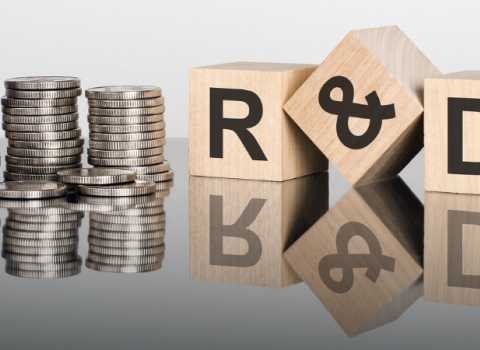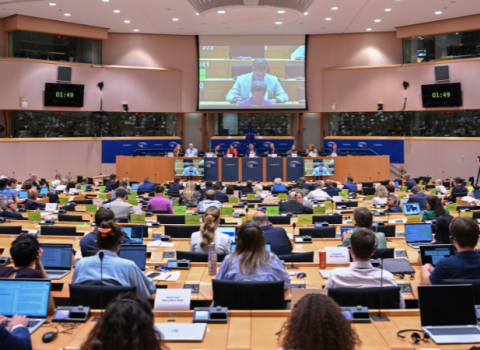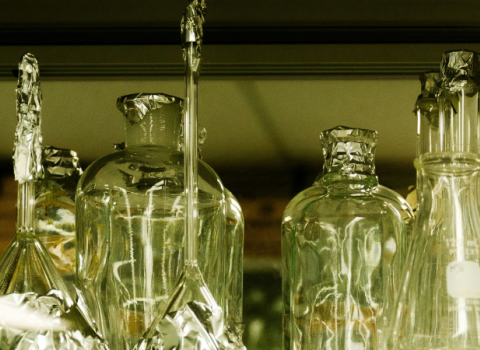Joint press release of the Unifying Systems in Catalysis (UniSysCat) Cluster of Excellence, the Center for the Transformation of Chemistry (CTC), the Leibniz Institute for Catalysis (LIKAT), the greenCHEM network, the Startup Lab Schwedt, and the University of Greifswald
On 15 May 2025, six leading players from the fields of science, innovation, and knowledge transfer signed a joint letter of intent to establish the Green Chemistry East network. The partnership aims to build a powerful innovation ecosystem that links the transformation of the chemical industry with the challenges of structural change in eastern Germany.
The move involves important institutions from five federal states:
- the Unifying Systems in Catalysis (UniSysCat) Cluster of Excellence in the Berlin area,
- the Center for the Transformation of Chemistry (CTC), a new large-scale research center in Central Germany (Saxony, Saxony-Anhalt),
- the Leibniz Institute for Catalysis (Mecklenburg-Western Pomerania),
- the University of Greifswald (Mecklenburg-Western Pomerania),
- the greenCHEM innovation network in Berlin, and
- the Startup Lab Schwedt, an EXIST model project of the Eberswalde University for Sustainable Development in Brandenburg.
New momentum for eastern Germany and the chemical industry
Eastern Germany has arrived at a turning point on the heels of two developments: The phasing out of lignite and the decline in imports of fossil fuels have left the region with the urgent task of building new, future-proof industries. At the same time, the chemical sector is shifting globally toward greener, more resource-efficient processes. For the partners in the alliance, this is a historic opportunity to position eastern Germany in the establishment of green chemistry.
"Green chemistry holds the key to a climate-friendly future. It replaces fossil fuels, closes material loops, and reduces environmental impact. Eastern Germany offers optimum conditions for driving this transformation forward – excellent research, strong industrial players, and innovative startups," the initiators say.
When basic research, applied development, industrial implementation, and start-up support come together, the result is a paradigm with international potential. Germany has a real chance to lead the global shift toward green chemistry, with eastern Germany at the helm as an innovation hub.
Read the network's Letter of Intent here.
"The chemical industry is facing profound change: Climate change and limited resources are demanding we come up with new, sustainable production methods. This opens up great opportunities, especially in eastern Germany, for innovation, job creation, and economic prospects. Those who invest in green chemistry now will be ahead of the game internationally. With our Cluster of Excellence, we're advancing catalysis research at the interface of chemistry and biology – laying the groundwork for real innovation. Through the Green Chemistry East network, we are pooling top-tier research, startup infrastructure, and industrial partners to help sustainable solutions reach the real world faster," says Professor Dr. Juri Rappsilber, spokesman for the UniSysCat Cluster of Excellence.
"Transforming the chemical industry is a challenge for an entire generation that can only be achieved through collaboration. That's why networks like these are so important. In the coming years, the Center for the Transformation of Chemistry (CTC) will focus on accelerating innovation in chemistry by advancing digitalization, standardization, and automation. We’re also working on developing a new generation of materials based on the 'design to recycle' principle right from the outset," says Professor Dr. Peter Seeberger, founding director of the CTC.
"I’m delighted to announce a new network today that spans five states in eastern Germany, bringing together a wide range of partners: universities, non-university research institutions, as well as technology transfer stakeholders and startups. This comes at a crucial time as we push ahead with the energy transition. These institutions have a lot to contribute here. I strongly support the plans of our UniSysCat Cluster of Excellence, which has been funded under the Excellence Strategy since 2007," says Professor Dr. Geraldine Rauch, president of TU Berlin.
Goals of the cooperation
The signatories pursue the following goals:
- Transforming the chemical industry through innovative catalysis, biotechnology, and circular economy solutions
- Establishing eastern Germany as a center of sustainable chemistry – by pooling research, infrastructure, and startup support
- Promoting technology transfer and startups at all stages of innovation
- Integrating marine biotechnology to use alternative raw material sources
- Strengthening the regional economic structure through sustainable processes and job creation
Living labs, startup support, and top-level research
The collaboration will center around living labs, i.e. innovation spaces for technical infrastructures. These include, for example, the Schwedt site and the expansion of existing spaces such as the "Catalysis2Scale" technical center at LIKAT and the Chemical Invention Factory in Berlin. Founders are to be given access to industrial test environments and support in scaling up new technologies. At the same time, the research institutes are focusing on excellent basic research, spanning catalysis research and marine biotechnology to sustainable material cycles.
"Innovation in green chemistry needs more than just brilliant research results, it is born out of the interaction between the players at the different stages of innovation. The Green Chemistry East network unites these players with the necessary infrastructure to bring deep tech innovations more quickly into real-world applications and to leverage their impact," comments Martin Rahmel, coordinator of greenCHEM.
Research groups at the University of Greifswald have been exploring topics in marine biotechnology for many years. One of Professor Dr. Thomas Schweder's lines of research is marine glycobiology: "Green Chemistry East is an interdisciplinary research network that opens up new perspectives for us to better exploit the promising potential of marine sugar compounds from algae as a renewable resource and to develop new applications in biotechnology."
"In order for the transformation of the industry to succeed, it needs to be accepted in situ. This will only happen if innovative approaches also generate new added value. In the Startup Lab Schwedt, we as a university are working together with industrial and municipal partners to create optimal conditions for the application and development of green technologies and thus to shape the transformation locally through external innovations," says Sascha Lademann, project coordinator of the Startup Lab Schwedt.
The next steps
The network is planning regular workshops, a joint "Transformation Day" with an innovation award, and coordinated applications for third-party funding. In a subsequent step, a task force will manage the strategic development of the emerging ecosystem.
Thjs article was first published on 15 May by TU Berlin.





 A unique international forum for public research organisations and companies to connect their external engagement with strategic interests around their R&D system.
A unique international forum for public research organisations and companies to connect their external engagement with strategic interests around their R&D system.